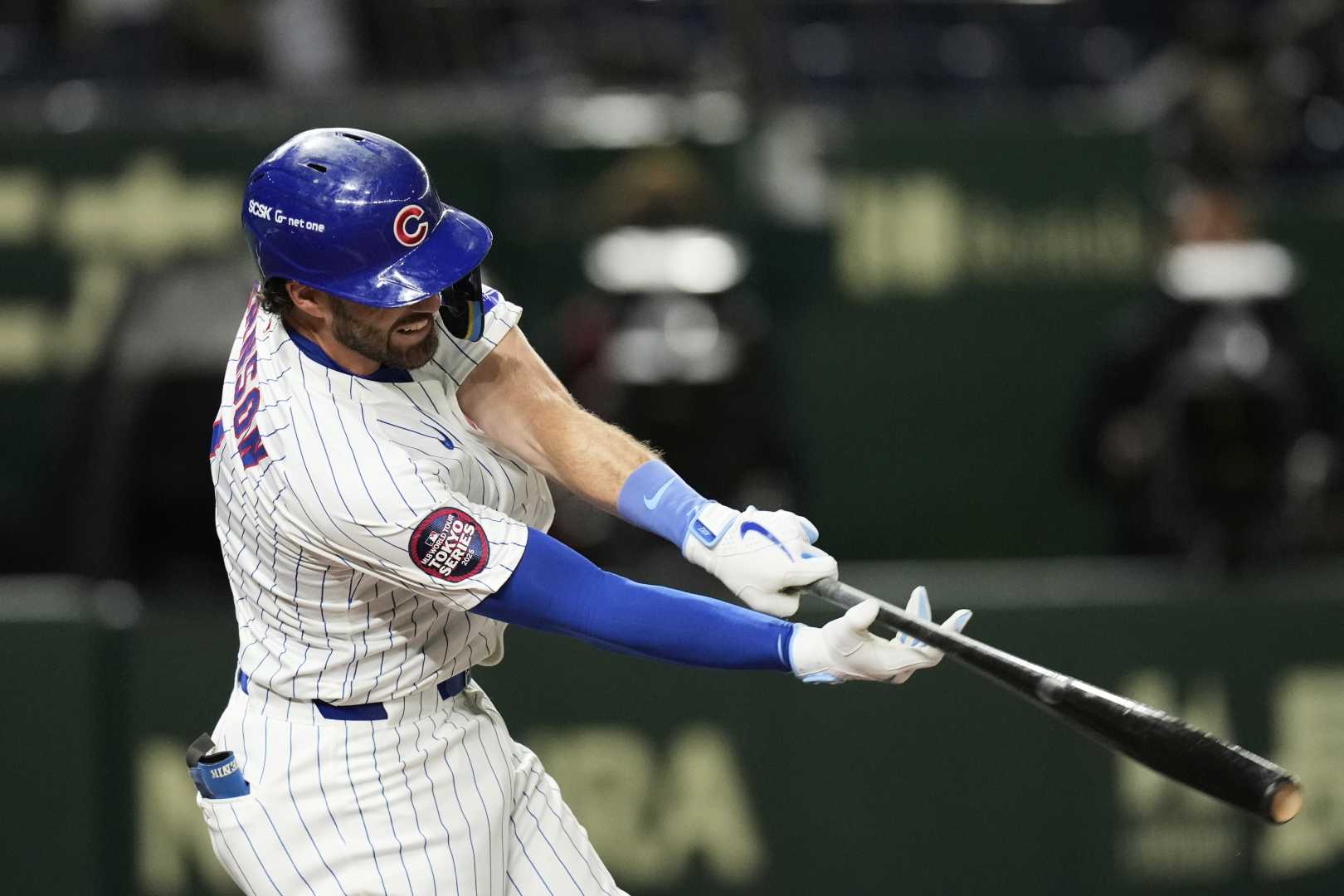Sports
Cubs’ Young Center Fielder Potentially on the Cusp of Breakout

CHICAGO, IL — The Chicago Cubs’ center fielder, an emerging talent, has struggled significantly at the plate this season, recording a .549 on-base plus slugging (OPS) percentage, far below expectations for a player with his skill set. Historically, he maintains a .639 OPS over his career, but the MLB community has begun to speculate that he could be on the verge of a breakthrough with some adjustments.
Experts suggest that if he can learn to swing less aggressively, he might unlock his full potential and develop into an elite player. The intricacies of baseball make such a transformation complex; it’s not simply a matter of reducing swings, but involves understanding pitch selection and refining batting mechanics.
The Cubs have witnessed flashes of brilliance that indicate his immense capabilities. For instance, in a recent game against the Texas Rangers, he achieved notable hits—a single off a slider in the second inning and a two-run single in the eighth, both demonstrating impressive bat speed and exit velocity.
Statcast data revealed that both batted balls had a minimum bat speed of 78 mph and exit velocities at 96 mph. Notably, these parameters reflect a rare occurrence in the league. Only 11 players this season have achieved similar batted ball outcomes across multiple at-bats, placing him among the ranks of powerful hitters.
Despite his current challenges, Cub’s analysts remain encouraged. “The potential is there,” one scout remarked. “He just needs to hone in on his approach. Cutting down on unnecessary swings will significantly benefit his game.”
When comparing metrics, he currently ranks in the 91st percentile for average launch angle on batted balls—suggesting that he’s capable of making solid connections. Nevertheless, his consistency lags behind that of other players with similar bat speeds, primarily because his approach at the plate seems overly aggressive.
Statistical analysis indicates that many the players performing comparably well in terms of bat speed have superior plate discipline, an area where he has struggled. For instance, he has consistently swung at over 40% of pitches outside the strike zone, which has added to his difficulties.
His teammate, Ian Happ, exemplifies the type of patience that could favorably influence Crow-Armstrong’s performance if adopted. “Happ’s ability to work counts is part of what makes him successful,” commented a batting coach. “If Crow-Armstrong can learn to pick his spots better, he could see his production skyrocket.”
Injuries and lineup changes also could impact the player’s opportunities to refine his hitting skills as the season progresses. While there are signs of improvement this year, including a better whiff rate than in the previous season, the struggle remains with consistently making effective contact.
The overall conclusion drawn from these observations is that Crow-Armstrong is one key adjustment away from maximizing his batting potential. If he can incorporate a more selective and disciplined approach to hitting, he could emerge as a true powerhouse in the league, potentially leading to accolades that come with such success.
As he continues to navigate the ups and downs of a professional athlete, players and analysts alike remain hopeful that this promising Cubs center fielder will realize his sizable potential before the end of the season, with aspirations for a brighter future in Major League Baseball.












